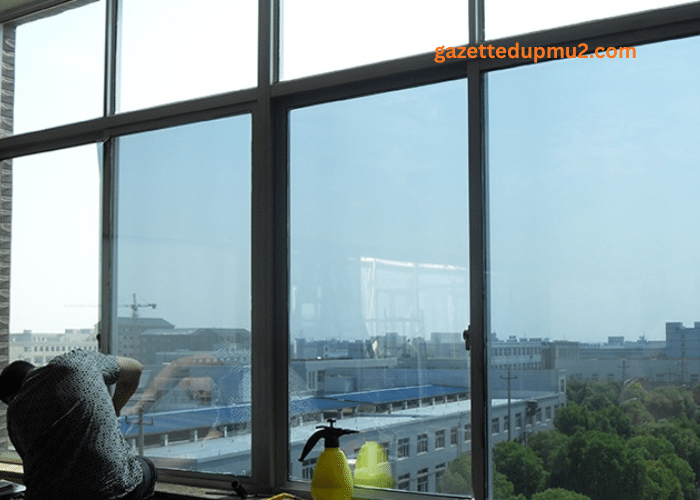Webhooks are a critical part of modern integrated headless CMS systems that facilitate real-time updates, immediate notifications, and tool integrations. By utilizing webhooks, businesses can operate more efficiently with less human intervention and keep content consistent across multiple platforms. This article will define webhook, explain why webhooks are used in a headless CMS, and how to use and manage webhooks for optimal success.
What Are Webhooks in a Headless CMS?
Webhooks are HTTP callbacks that are triggered automatically upon an event, meaning that in a headless CMS, when something happens content is added, updated, or removed, these are actions that trigger a webhook. This is different from other applications where interaction requires polling, meaning the application needs to ping the API on a timed basis to see what has changed. Rather than relying on some external application to ping, the webhook pings when something has changed. This means that any application or service talking to the headless CMS can do something in response right away. This also means less resource-intensive API calls since applications do not need to constantly ping, providing content more quickly.
Why Webhooks Are Essential for Real-Time Content Delivery
Webhooks facilitate content delivery and automation in real-time. When sites can update so quickly, relying on content delivery or awareness of updates after the fact can frustrate users and complicate internal processes. A webhook lets external systems that need notification of content updates receive that notification instantaneously, whether it’s a static site generator, a mobile app, a search index, or even analytics reporting. A Strapi CMS alternative that provides robust webhook capabilities ensures awareness of such functionality, meaning a business can give its users/integrators access to vital information the moment they need it, automatically and without fail, enhancing customer experience and internal efficiencies.
Configuring Webhooks in Your Headless CMS
Configuring webhooks allows you to determine which triggers and endpoints you want to create within your headless CMS for rapid, effective communication with other systems. Usually, this begins with determining which events within your CMS will create webhook calls. For example, when a new article is published, when an article is updated, when an entry is deleted, or when a user permission or status is changed in the workflow each of these can be events that trigger webhooks to outside systems.
It’s essential to establish trigger events because when a system creates a call for publishing or deleting content, it only means something if content is done in certain ways. If the trigger occurs at some arbitrary time, it causes undue anxiety for those systems that are set to accept the call.
Once the triggering events are established, a critical step afterward is assessing which external URLs (endpoints) will get webhook notifications from the CMS. Usually, these are supplied by the external applications, services, or integration platforms that are meant to receive, parse, and process the data contained within the webhook payload. Administrators have to specify them based on appropriate security, integrity, and functionality and ensure that all external URLs can receive webhook requests and process them as intended.
Another important consideration when developing webhooks is the anticipated payload structure and formatting associated with sending data to external systems. Typically, the webhook payloads sent utilize standard data formats like JSON or XML. JSON is the favored format, as it’s easily utilized and implemented in third-party applications.
Therefore, it’s critical to outline and publish the payload structure even to the dev team that utilizes the webhook later which fields, attributes, or metadata will be sent. The stronger the integrations, the easier it is for the third-party systems or applications to parse and validate the incoming data without rejecting the payload unexpectedly due to ill-defined formatting expectations.
Moreover, webhook managers need to consider additional variables when configuring webhooks, such as HTTP request types (most use POST requests), timeouts or retries, and headers (for authentication or content-type). For example, using specific headers particularly for authentication like tokens or API keys constitutes another security layer for webhook transmissions, ensuring that only verified endpoints receive and/or act on payloads. In addition, timeout and retry options ensure that if a webhook encounter loses connection or the endpoint is temporarily down, the data isn’t lost forever, and the action can be attempted again with less risk of failure.
All in all, minimizing errors around webhook integration needs to be hyper-focused in these areas: what triggers are sent, to where endpoints, with what payload, what authentication requirements, and how processing errors are managed. The less likelihood of error based on overly clear configurations, the less confusion in implementation and the more seamless automation can occur, ensuring webhooks work better, faster, and cheaper across your CMS universe.
Securing Webhook Communications
Webhooks are critical to communication and operational effectiveness, meaning they must be secure. If they are not secure, someone could intercept the communication or access the transmission and manipulate it. Security comes from using HTTPS and not HTTP (which is unsecured and does not guarantee data encryption) as well as security tokens, API keys, and cryptographic signatures. These are forms of authentication that signal whether a webhook sent as a communication was legitimately sent from an authorized source. Failing to employ such security could mean someone’s system is bombarded with fake webhook events, or so much sensitive information is lost that recovery is impossible. Using secure webhook services improves the quality of operations online and keeps updated information in a secure environment.
Common Use-Cases for Webhooks in Headless CMS Projects
Webhooks are universal and apply to various real-world use cases across headless CMS projects. The primary use case for webhooks, however, is for incremental updates or full-site rebuilds when using a static site generator. A frequently applied use case with webhooks is with Gatsby, Next.js, Hugo, or Jekyll. For example, with a webhook, a content creator can trigger a site rebuild as soon as they publish or edit their content. Instead of going through the manual process of a rebuild once their action has been taken, it can be done automatically the second it needs to be.
This reduces the latency of when an end-user can see updated content, and instead, it works in favor of the content creator without further manual action. This kind of versatility makes sites much more fluid especially important for sites that constantly update and need visibility changes for end-users instantly.
Beyond site rebuilds, however, webhooks also allow headless CMS applications to communicate with other services. For example, search indexing services like Algolia or Elasticsearch rely on webhooks to update their information when something is published or edited. Webhooks tell these external search services that they need to index the new information. Only now.
This way, when users go to search for information on a company’s site, they have accurate search results immediately after editing, which improves usability and ensures that they can find the content they’ve been given. Without this automated solution, search indexes would need to be manually triggered or set to update at certain times to be accurate and timely, and such endeavors take time.
Moreover, in the realm of analytics, webhooks offer incredible benefits as they allow analytics software Google Analytics, Mixpanel, or Segment to be alerted in an event-driven manner. Therefore, when an event occurs related to the content an article gets published, it gets edited, someone reading an article having a webhook would instantly notify the analytics software of such actions at the exact time they occur, giving it the opportunity to properly assess and compile information at that time.
Being able to compile such a report at that precise moment gives a business awareness of new content patterns, audience interaction, or inexplicable actions before they get out of hand or before they become lost opportunities. Therefore, analytically driven information is more beneficial and impactful.
Furthermore, webhooks facilitate extensive automation of integrations and workflows across the board. For instance, a webhook could send a message to a colleague’s Slack or Teams account to notify them of a change in content or necessary edit in real-time, which is better than waiting for the next weekly update. Furthermore, a webhook can feed into an external social media scheduler or email marketing application to automatically apply new content to scheduled Instagram posts, Mailchimp blasts, or HubSpot databases.
Therefore, instead of spending countless hours on manual administrative tasks, integration via webhooks allows for more strategic and focused content development and audience interaction instead.
Ultimately, the possibilities and flexibility of webhook integration across many integrations and automations in a headless CMS are great. Utilizing requirements that necessitate integrations via webhooks enables the enterprise to keep content up to date across sites in real time, allows content to be charged with automated workflows for timely analytics and integration with third-party applications. This all makes content management easier, more efficient in responding to needs, and better positioned to leverage strategic insights for continued high-performing digital products.
Managing and Troubleshooting Webhooks Effectively
Webhook monitoring and troubleshooting occur under the radar so that integration isn’t jeopardized later down the line. For example, a headless CMS generally has logs or a dashboard that indicates whether or not webhooks go through so that developers know right away if a webhook fails to come through whether it’s delayed or never sent. Should webhooks fail, they’ll need troubleshooting, either by assessing the payload and making sure the endpoint is up and running and not blocked, or that firewall settings and security permissions are set up appropriately and not denying access. Thus, the more webhooks can be monitored and stress-tested over time, the easier it will be to troubleshoot problems down the line to ensure that integration between this service and any others that depend upon the webhook information is correct and up to date.
Optimizing Webhook Performance
This is all compounded by the need for performance. A reduced payload is necessary, meaning only necessary data requests should be made, and ideally, webhook events should be batched. To solve temporary networking issues, systems should employ retry logic with exponential backoff. The more receiving endpoints are optimized for quick response and acknowledgment, the faster the webhooks can be processed. In addition, through performance testing, adjustments can be made to maintain a consistently timely interaction, which will be particularly useful for time-sensitive content delivery.
Challenges and Considerations with Webhooks
Yet there are complications to using webhooks. For instance, if an endpoint goes down, if a network is interrupted, or due to some erratic formatting of the payloads, automated activities may not trigger when they’re supposed to, meaning organizations must anticipate these results and develop fail-safes. Formalized error prevention and contingency plans should the webhooks not trigger as intended. In addition, there is a level of planning with webhooks regarding how frequently they are sent/acknowledged and how many at once, which, if not accounted for, may overload the receiving end. Therefore, using webhooks is reliable provided the above is taken into consideration to establish a safe webhook network.
Scaling Webhooks for Enterprise Projects
Enterprise-level headless CMS projects require a robust, scalable webhook solution. Webhook scaling, in the end, means more simultaneous webhook firings without a drop in quality. Throttling, load balancing, asynchronous triggering, and queuing are all ways to scale a webhook under required thresholds. Webhook receivers must constantly evaluate capability thresholds and scale resources up and down accordingly. When resources are scaled, either a distributed system within the overall architecture or a webhook-specific architecture may be required. This ensures that webhook firings stay on the level and are reliable, responsive, and performant for enterprise-level operations.
Future Trends and Innovations in Webhook Technology
The future of webhooks is bright, and adoption will only expand. For example, expected developments include more comprehensive webhook management applications that permit observation, processing, and configuration from a single dashboard. In addition, expected developments include an increased inclination to use serverless architectures and cloud-native applications for easier scaling and automation. Additionally, new points of security, better performance, and new possibilities for real-time analytics will enhance the use of webhooks, which, going forward, will be a critical part of headless CMS solutions.





